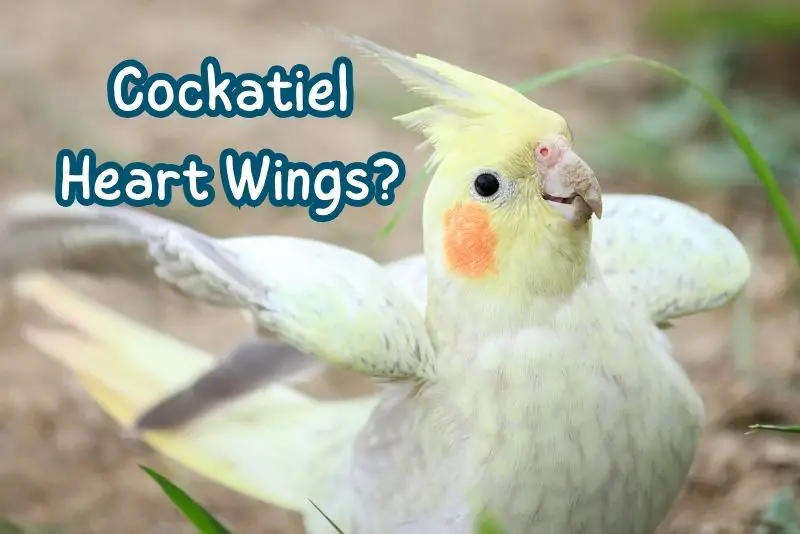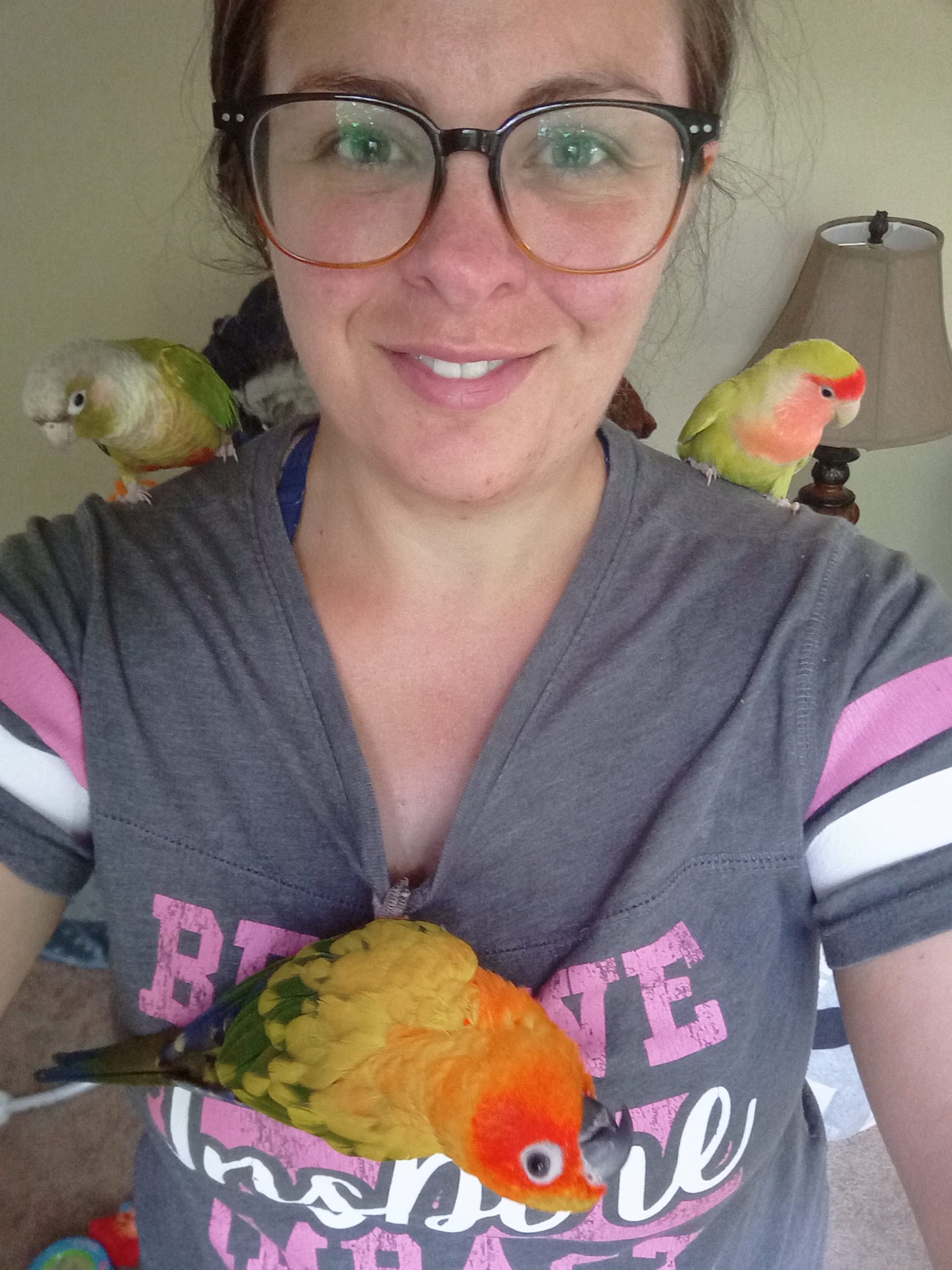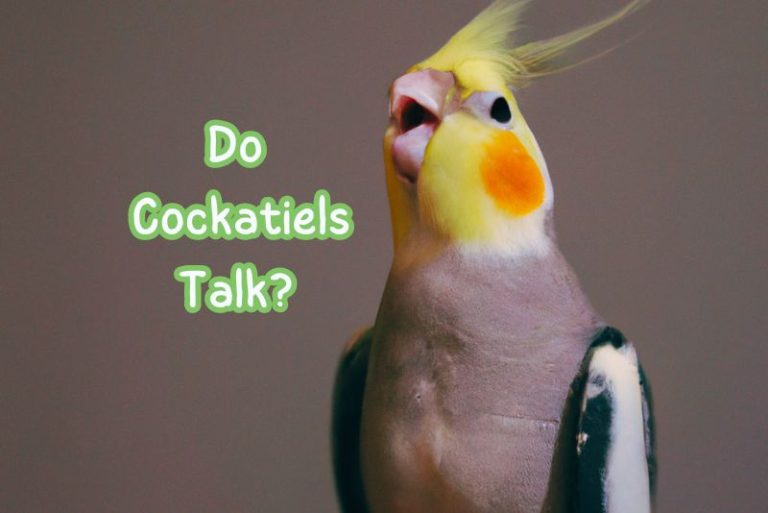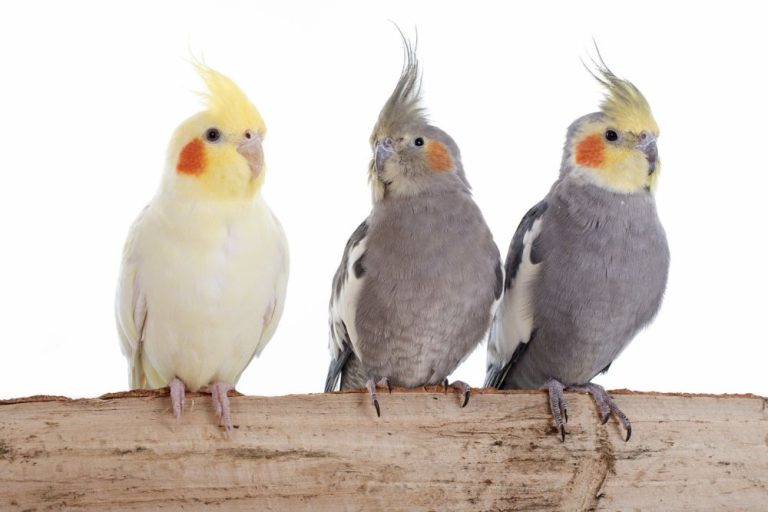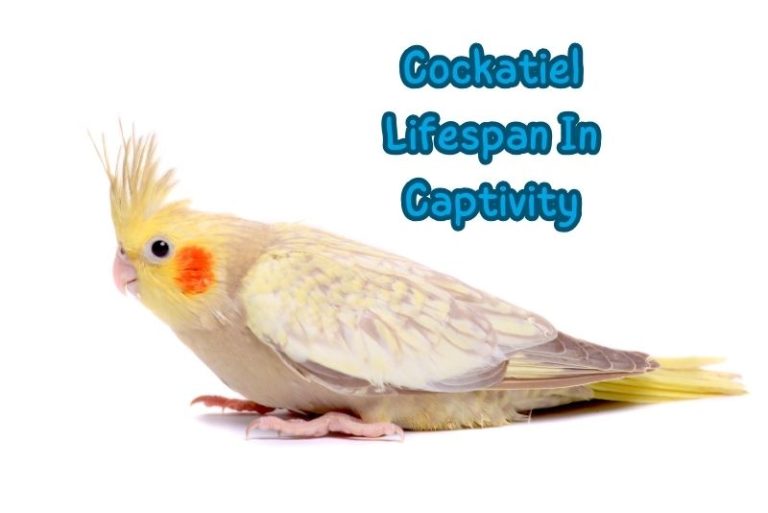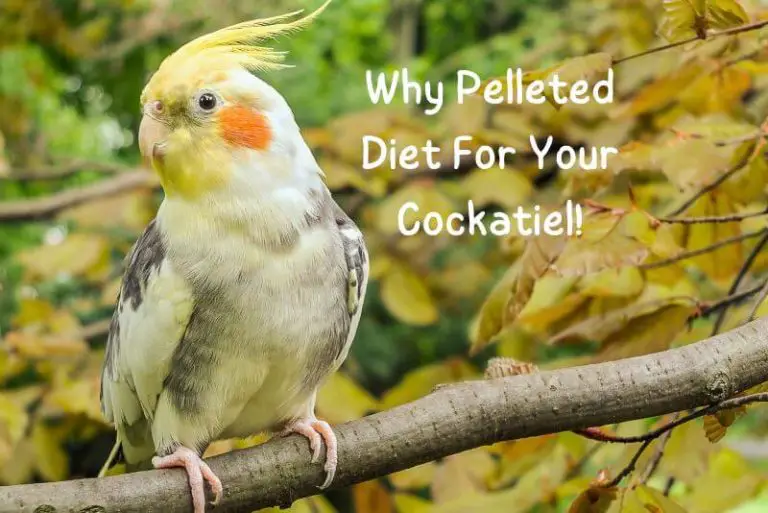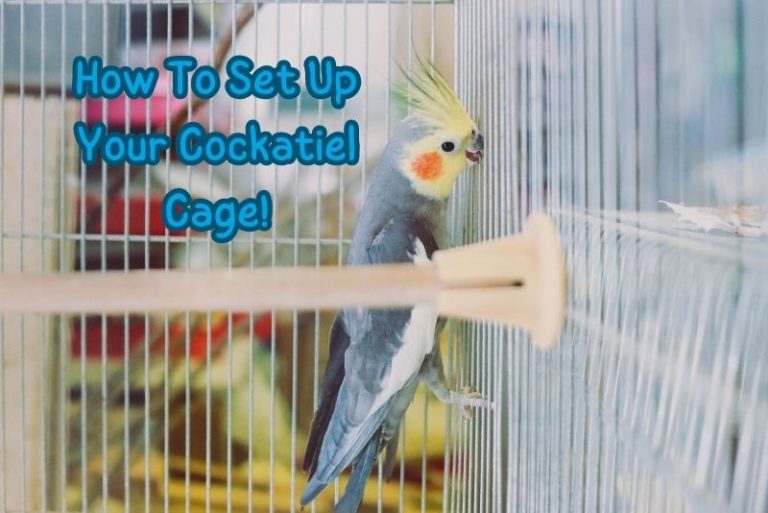What Are Cockatiel Heart Wings?
Have you ever caught a glimpse of your cockatiel adorably fluffing its wings, forming a shape that oddly resembles a heart?
Heart wings are when a cockatiel fluffs and extends its wings in a way that forms a heart shape. This behavior is unique to cockatiels and is one of the many ways they communicate with their owners or fellow birds.
It’s a sight that instantly melts your heart, but what does it really mean?
In this article, we get into the hidden messages behind this endearing behavior. Get ready to discover why your feathered companion creates these heart-shaped wings and what it signifies
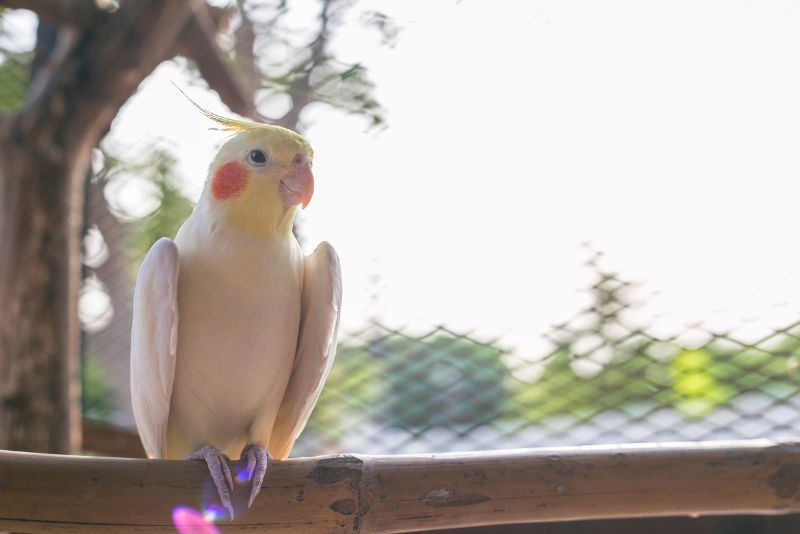
Why Is My Cockatiel Making Heart Wings?
If your cockatiel starts to display “heart wings,” it’s generally a sign that they are feeling content, relaxed, and secure in their environment.
While this behavior is often associated with happiness and comfort, it’s interesting to note that it’s primarily a “showing off” behavior exhibited by male cockatiels. That’s not to say that female cockatiels can’t or won’t do it; they’re just often less keen on showing off than their male counterparts.
So, if your cockatiel presents heart wings when you’re around, take it as a high compliment—you’re doing something right, and your feathered friend is very happy in your presence!
Here’s more about the reasons why for heart wings:
Affection and Bonding
When your cockatiel stretches its wings out and brings them together to form that adorable heart shape, it’s doing more than just showing off its feathers. This act is a heartfelt expression that signifies love, trust, and a strong bond between you and your feathery friend. Heart wings are a common way cockatiels show affection, serving as their unique way of saying, “I feel safe and happy with you.” This simple yet profound gesture deepens the emotional connection, making it a memorable and meaningful part of your relationship with your pet.
Courtship and Mating Behavior
If you have more than one bird, you might be intrigued to notice that heart wings can serve a special purpose in the world of cockatiel romance. Male cockatiels often flash their heart wings as part of their courtship ritual to catch the eye of a potential mate. This amorous display isn’t just a stand-alone act; it’s usually accompanied by a melodious serenade and other captivating behaviors, signaling their readiness to reproduce. So, in a multi-bird setting, when you see one cockatiel making heart wings towards another, you’re likely witnessing a love connection in the making!
Excitement and Happiness
Sometimes, cockatiels make heart wings when they’re absolutely thrilled, like when they catch sight of their favorite toy or get a tasty treat. Known for their playful and energetic nature, these charming birds often use heart wings as a spontaneous visual celebration. It’s their unique way of letting you in on their joy, essentially showcasing their contentment and enthusiasm for life’s little pleasures.
Attention-seeking
If you find your cockatiel fluffing its feathers into heart wings while also chirping loudly, chances are they’re vying for your attention and could use a little tender loving care (TLC). Interestingly, some cockatiels quickly learn that this eye-catching display wins them not just attention but also rewards from their owners. Once they connect the dots that heart wings elicit positive responses or even treats, don’t be surprised if they start flaunting this endearing gesture more frequently to capture your attention and score some goodies!
Mimicking Human Behavior
Cockatiels are not only keen observers but also intelligent birds, capable of imitating various actions and gestures they observe around them. Whether it’s your behavior or that of other pets in the home, these feathered friends are always watching and learning. So, if your cockatiel sees you or others making heart shapes with your hands, don’t be surprised if it tries to mimic the same motion with its wings. It’s their unique way of imitating human behavior, showcasing their smart and perceptive nature.
Display of Dominance
In a multi-bird setting, heart wings can sometimes be more than just a cute display—they can be a show of dominance among the flock. Cockatiels are social animals that establish hierarchies within their communities. If you notice your cockatiel displaying heart wings in the company of other birds, it may be using this charming gesture as a way of asserting its position in the pecking order. So, while heart wings often symbolize affection and bonding, they can also serve as a nuanced form of social communication, emphasizing the bird’s dominant status within the group.
Stress or Anxiety
While heart wings are generally a delightful sign of positive emotions like love and happiness, it’s essential to be aware that they can also serve as a cry for help. If your cockatiel is feeling overwhelmed, stressed, or anxious, the display of heart wings might be a way for your feathery friend to self-soothe or seek reassurance. So, it’s crucial to observe the overall context and other behaviors accompanying the heart wings to accurately gauge what your cockatiel is trying to communicate.
Health Issues
On rare occasions, your cockatiel’s display of heart wings could signal more than just affection—it might be an indicator of underlying health issues like respiratory distress or physical discomfort. If you notice that your cockatiel consistently shows heart wings or exhibits other abnormal wing postures, it’s crucial to consult an avian veterinarian. Doing so will help you rule out any medical concerns and ensure that your feathery friend is both happy and healthy.
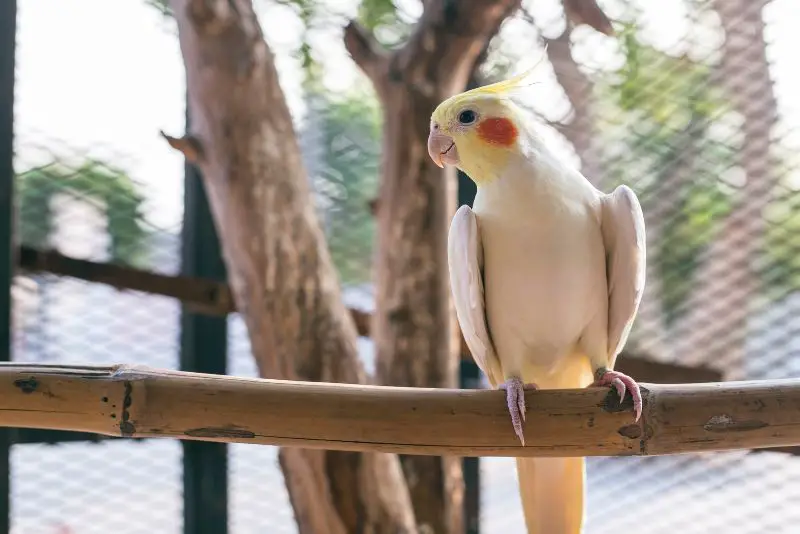
Is Cockatiel Making Heart Wings Good or Bad?
Most often, heart wings in cockatiels are a cherished sign that symbolizes not only happiness and playfulness but also a strong bond between the bird and its owner. However, it’s crucial to look at the whole picture. While the heart wings themselves are generally endearing and positive, you must observe the context and other behaviors to determine if your cockatiel might be stressed or sick. If you notice signs of stress or anxiety accompanying the display of heart wings, it becomes vital to assess your bird’s environment and address any potential triggers causing discomfort. In such cases, there are specific measures you can follow, which we’ll explore later in this article.
How To Tell If A Cockatiel Is Happy
Just like humans, cockatiels have their own love language—well, happiness language, to be exact. They express their emotions in nuanced ways, and understanding these signs can deepen your relationship with your feathered friend. One prominent display of cockatiel joy is the famous “heart wings,” but there are other behaviors and signals to keep an eye on as well.
A happy cockatiel exhibits several specific behaviors, all of which indicate a positive emotional state and a healthy, fulfilling relationship with their owner.
Here are some signs that show your bird is content:
Body Language and Posture
Firstly, body language speaks volumes. A cheerful cockatiel will flaunt a relaxed posture, their feathers neatly groomed. Holding their crest high is a testament to their confidence and satisfaction. You’ll also notice their bright, alert eyes and the smooth, even arrangement of their feathers, all pointing to a contented bird.
Vocalizations
Another melodic sign of happiness in cockatiels is their vocalizations. These birds are renowned for their melodious songs, which can range from chirps and whistles to mimicked tunes. A happily chattering or singing cockatiel throughout the day is like a feathered stamp of approval, clearly indicating their good spirits.
Social Interaction
Cockatiels are social butterflies—or should we say, social birds? They thrive on companionship. If your pet is eagerly engaging with you, actively seeking your attention and interaction, you can confidently conclude that they’re content and fulfilled.
Interest in Food and Toys
A satisfied cockatiel will also have a healthy appetite. They will approach their food with eagerness and excitement. Similarly, their enthusiasm extends to their toys; a happy bird is a curious bird, ready to explore and play.
Energetic Behavior
The ultimate sign of a happy cockatiel? Their energy level. Observing your bird as they energetically explore their cage, hop from perch to perch, and engage in playful activities is the avian version of a thumbs-up. If, however, your bird seems lethargic or withdrawn, it could indicate distress or unhappiness.
Specific Behaviors Indicating Happiness
To zoom in a bit, let’s discuss specific behaviors that are usually on the happy checklist:
- Singing: Cockatiels often whistle their own tunes or learned songs when they’re in a joyful mood.
- Head Bobbing: This quirky action is another good-mood indicator.
- Beak Grinding and Puffing Up: If you catch your cockatiel grinding its beak and puffing up its feathers, it’s often a sign they’re feeling quite content.
- Displaying Heart Wings: Yes, we’re back to this! Cockatiels also like to show their “heart wings” when they’re pleased and comfortable.
By familiarizing yourself with these various signs of cockatiel happiness, you’ll be better equipped to evaluate whether those adorable heart wings are a genuine expression of joy or potentially a result of stress. Understanding these behaviors will not only enhance your bond with your feathery pal but also ensure their overall well-being. So next time your cockatiel struts their stuff, sings a melody, or flashes those heart wings, you’ll know exactly what they’re chirping about!
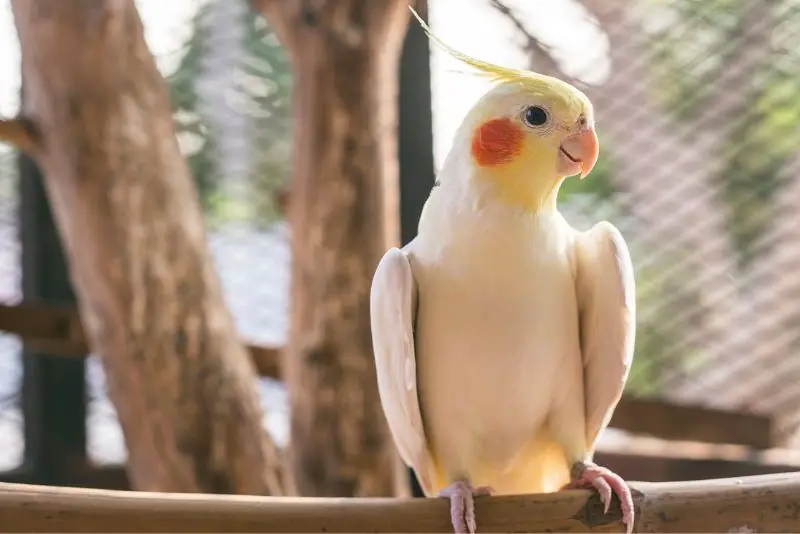
How To Tell If Cockatiel Heart Wings Are Positive or From Stress
Being well-versed in the signs of a happy cockatiel, as we’ve just explored, sets you up to discern whether those heart wings are a positive display or a cause for concern. The key is to look at this special gesture in the context of your bird’s overall mood and activities. So, let’s dig deeper into how to tell a happy heart wing from a stressed one.
Context Is King
If your cockatiel is a little ball of energy—singing, chirping, and frolicking about—they’re probably in good spirits. Heart wings displayed in this context likely mean your feathered friend is just brimming with happiness. It’s like they’re saying, “Hey, I’m exploring, I’m curious, and life is good!”
Red Flags to Watch Out For
However, if you spot heart wings while your cockatiel seems stressed or down, it’s time to put on your detective hat. Stressful heart wings might come with symptoms like excessive feather plucking, biting, or even aggressive postures. If your bird appears withdrawn, perhaps spending too much time huddled in a corner, those heart wings might actually be a cry for help.
Individual Nuances
Remember, cockatiels are as individual as we are; what’s true for one bird might not be for another. Some may be more prone to stress and might flash those heart wings as a subtle stress signal. Others may show more dramatic changes. That’s why keeping a close eye on your pet’s overall demeanor and behavior patterns is absolutely essential for understanding the emotions behind those heart wings.
Steps to Take for a Stressed Cockatiel
If you’ve pieced together that those heart wings are more a sign of stress than happiness, don’t fret. There are proactive ways to turn that frown upside down. By eliminating stressors, providing a comforting habitat, stimulating their little bird brains, and serving up a balanced diet, you can soothe their ruffled feathers. But we’ll dive into the nitty-gritty of tackling cockatiel stress in the upcoming section, “What To Do If Cockatiel Is Stressed.”
In essence, deciphering the meaning behind your cockatiel’s heart wings is like learning a new language—one that strengthens your bond and enhances their well-being. By tuning in to their emotions, you’re not just a pet owner; you’re part of their flock, and that’s a place of honor in the cockatiel world. So keep observing, keep learning, and most importantly, keep loving your feathery friend.
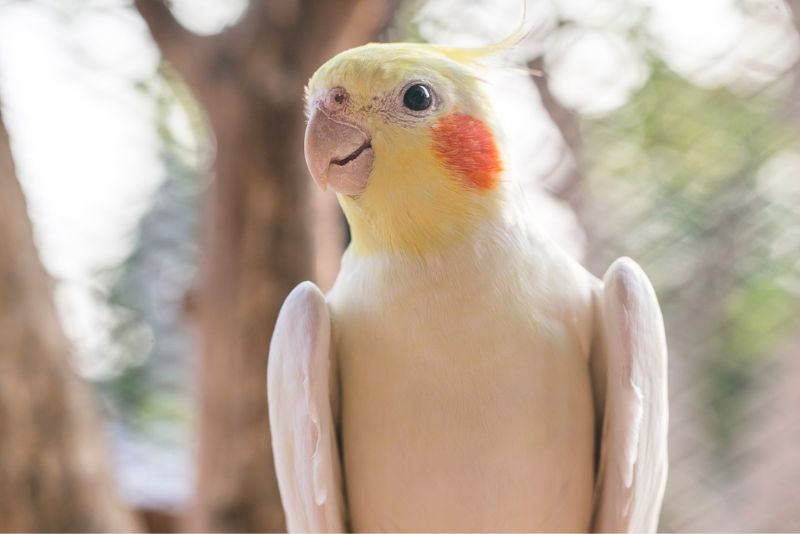
What To Do If Cockatiel Is Stressed
So you’ve got a hunch that your cockatiel’s heart wings aren’t the happy dance you hoped for. Don’t worry, you’re already ahead of the curve just by recognizing it. And since you’ve been dialing into their emotional vibes, you’ve got a head start on turning things around. Here’s your one-stop guide to alleviating stress and pumping up the joy in your cockatiel’s life.
Step One: Nix the Stressors
First off, let’s figure out what’s bothering your feathered pal. It could be anything from a noisy environment to a cage that’s too small. Remove these potential stressors, and you’re already halfway to a happier bird.
Step Two: Comfort is Key
Next, let’s make sure their living space is like a five-star birdie resort. Think cozy, safe, and stimulating. A comfortable environment is your cockatiel’s sanctuary, a place where they can truly relax.
Step Three: Get Their Brains and Bodies Moving
A bored bird is a stressed bird. So let’s get that beak and those feathers busy! Introduce puzzles, foraging activities, and maybe a bird-safe outdoor area for a little adventure. Keep their mind ticking and their body exploring, and you’ll have a happier bird on your hands.
Step Four: Social Butterfly, or Bird Rather!
Your cockatiel is a social creature; they need interaction like we need air. Spend quality time with them, and if possible, introduce them to other feathered friends. Birds of a feather should indeed flock together for emotional well-being.
Step Five: You Are What You Eat
A balanced diet is more than just pellets; it’s about variety. Fresh fruits, veggies, and yes, their regular pellets make for a birdie feast that not only satisfies their taste buds but also supports their emotional health.
Step Six: Don’t Forget Those Vet Visits!
Make sure your vet is a regular character in your bird’s life story. Regular veterinary check-ups ensure that your little friend stays physically fit, which is a cornerstone of emotional well-being.
Step Seven: Extra Sprinkle: Positive Vibes Only
Reward good behavior with treats and a flood of affection. Positive reinforcement isn’t just training; it’s affirming your bird’s self-esteem.
Preventing the Stress Wings and Welcoming the Love Wings
By taking these proactive steps, you’re doing more than stress-busting; you’re laying the groundwork for a future of happiness—and maybe even some voluntary heart wings! Stay tuned for our next section, “How to Make a Cockatiel Create Heart Wings,” where we’ll explore how to encourage this adorable behavior in your winged companion.
There you have it—a stress-busting playbook that’s about more than just relief; it’s about enriching your cockatiel’s life in every way. Because a happy bird isn’t just about fewer stress signs; it’s about a life filled with birdie joy!
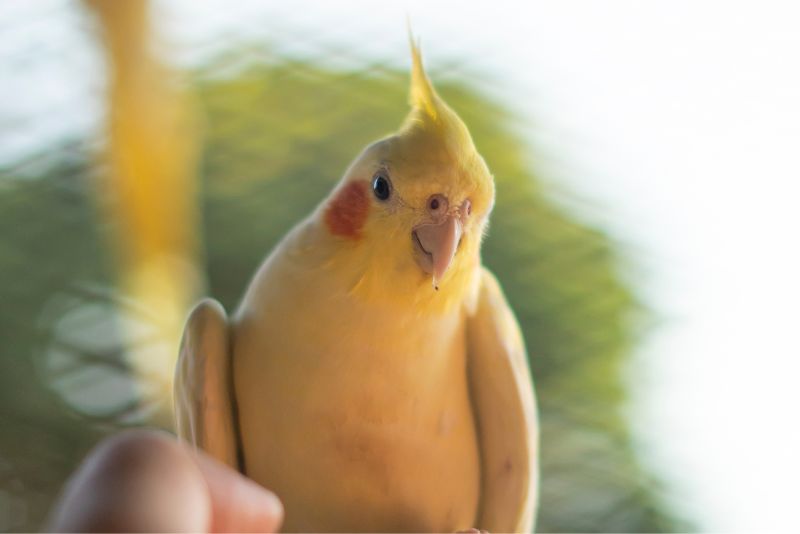
5 Things To Try To Make a Cockatiel Create Heart Wings
So you’ve got your stress-busting toolkit in place, and now you’re wondering, “How can I get my cockatiel to show those adorable heart wings on purpose?” Glad you asked! Let’s dive right into some bird-approved methods to encourage that heartwarming display of feathered love.
1. The Cuddle Factor: Love up Your Bird
This one’s simple but super effective—cuddles and gentle scratches go a long way. Your bird doesn’t just tolerate your affections; they love it! This tactile connection makes them feel secure and loved. Get your cuddle game on, and those heart wings might just make an appearance.
2. The Sound of Music: Woo Them with Melodies
Who knew your cockatiel was a music aficionado? Try playing soft, soothing music to set the mood. Whether it’s a bit of Bach or smooth jazz, your bird might just respond by showing off those heart wings as they get into the groove.
3. Mirror, Mirror on the Wall: Self-Love for the Win
Offering a mirror can be like setting up a birdie Tinder profile. When your cockatiel catches a glimpse of their own fabulous reflection, they might just feel so good that the heart wings come out. It’s like they’re saying, “Hey, good-looking! Wanna hang out?”
4. Training School: Patience and Social Skills
Training isn’t just for dogs; birds dig it too! But unlike a quick sit or paw shake, heart wings take time and comfort. Create a routine of positive socialization, filled with treats and praise. In time, your bird will feel secure enough to show you some love, wing-style.
5. Monkey See, Monkey Do: Mimic Those Heart Wings
You read it right—you can get in on this action too! Use your hands to mimic the heart wings and show your bird how it’s done. It’s like a game of Simon Says, but way cuter. Your cockatiel will get the idea, and before you know it, you’ll both be flapping those heart wings in unison.
And there it is, your five-step guide to encouraging heart wings in your cockatiel! So go ahead, start cuddling, play that soft tune, introduce the mirror, invest time in training, and yes, flap those human “wings.” You’re not just making your bird’s day; you’re making their heart take flight!
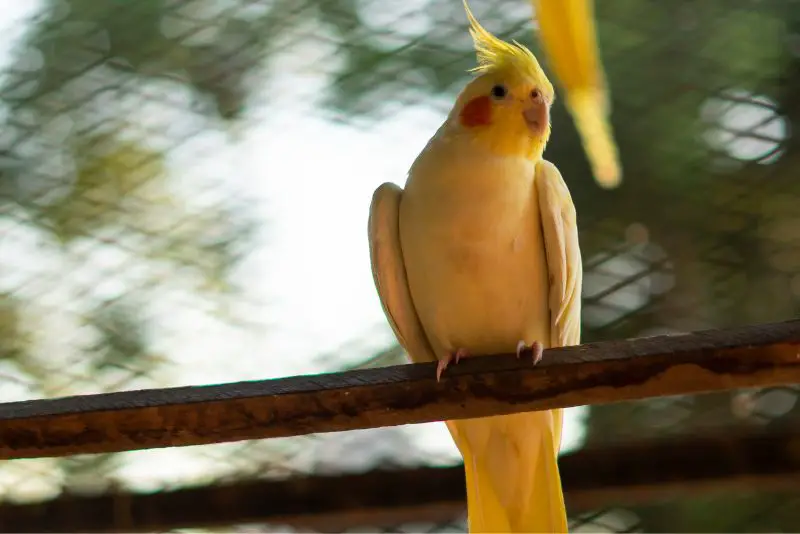
Cockatiel Heart Wing FAQs
Curious minds want to know, and when it comes to understanding your cockatiel’s adorable behavior, you’ve got questions. So let’s hop right into the most commonly asked questions about heart wings, and get you the info you need!
Is it A-OK for My Cockatiel to Sport Heart Wings All Day, Every Day?
You bet, but hold on a second. If your cockatiel is rocking the heart wings 24/7, it’s good to pause and observe their other behaviors. Are they also eating well, chirping joyfully, and keeping those feathers neat? Great! That’s the whole package of a happy bird. But if you notice anything odd like feather plucking or a lack of vocalization, it might be time for a check-in with the vet. Remember, context is king!
Do Both the Gents and the Ladies Get Into the Heart Wing Action?
You’ve got it! Both male and female cockatiels are capable of making those charming heart wings. It’s an equal-opportunity expression of joy, folks! Whether you’ve got a Mister or a Missus, expect to see some heart-fluttering action from your feathered friend.
How Long Until My Cockatiel Becomes a Heart Wing Pro?
Ah, patience, my dear Watson. Training a cockatiel to make heart wings on command isn’t an overnight thing. It’s more like a slow dance, building up trust and rapport over time. A dash of daily training, a sprinkle of treats, and heaps of love will get you there. The timeline? That depends on your individual bird’s personality and comfort level.
My Cockatiel Gets All Heart Wing-y Just For Me. What Gives?
Oh, you should be flattered! Your bird is basically writing you a love song every time those heart wings show up. It means you’ve got a special connection, and they feel most secure and loved when you’re around. It’s like getting a feathery hug every single day. Cherish it!
Help! My Cockatiel Has Quit the Heart Wing Game. Now What?
If those heart wings have gone MIA, it’s a good idea to play detective. Any changes in diet, environment, or routine? If you can’t pinpoint anything, then it might be worth taking your feathered pal to the vet. Sometimes changes in behavior can signal underlying health issues that need to be addressed. It’s better to rule out anything serious to keep that birdie heart happy and healthy.
There you go, answers to your burning heart wing questions, served up in a way that even your cockatiel would chirp about. Got more questions? Keep ’em coming! Your curiosity is the first step to becoming the cockatiel whisperer you were always meant to be!
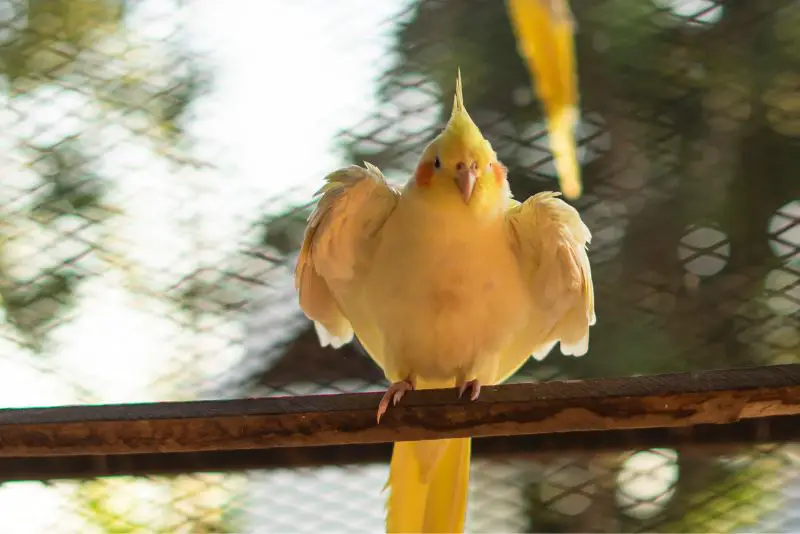
Wrapping It Up: The Heartwarming Tale of Cockatiel Heart Wings
Alright, feathered-friend fans, we’ve chirped, we’ve chirped, and we’ve absolutely soared through the swoon-worthy topic of cockatiel heart wings! Are they a love note? You bet. A cozy high-five from your pet bird? Absolutely.
So, what’s the key? A big part of making this wing-to-heart connection special is all about you—the way you tune in to your cockatiel’s mood, vibe, and those adorable little quirks. Sure, it’s an “aww” moment to see those heart wings, but don’t forget to keep an eye out for the full picture. Is your birdie relaxed? Check. Bright-eyed? Double check. Snacking and chirping like there’s a birdie buffet with a karaoke machine? Triple check!
But hold the phone. If you notice your usually chirpy buddy acting a little off, don’t just brush it under the rug. Act quick and investigate. Sometimes a tiny shift in behavior can signal that it’s time for some extra TLC or even a vet visit.
So, with just the right blend of love, laughter, and a sprinkle of attentive care, you and your feathered BFF are all set for a sky-high journey filled with heart wings galore. Here’s to countless more heartwarming moments with your cockatiel—your adorable partner-in-chirp!
Feeling pumped about all things cockatiel? Us too! Keep that curiosity flying and your questions coming. The sky’s the limit! 🦜❤️
Have you seen your cockatiel make heart wings? Let us know in the comments!
-Kacey
P.S. Did you like this article? Fly on over to:
- How to Set Up a Cockatiel Cage
- Why Pelleted Diets are Essential for Cockatiels
- Cockatiel Pellets: Top Choices for a Healthy Diet
- Cockatiel Care 101: How to Keep Your Feathered Friend Thriving

